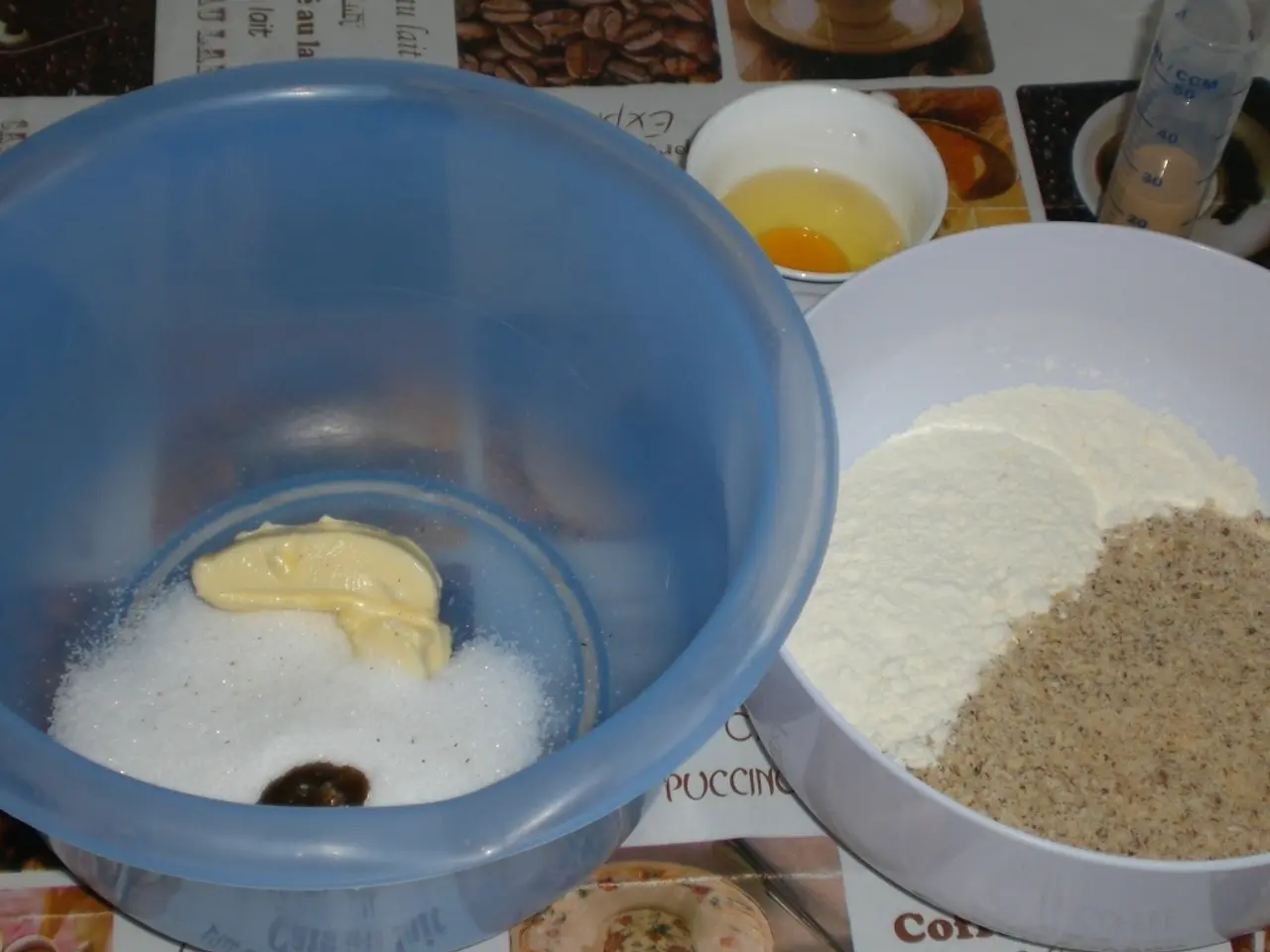Increase Your Daily Fiber Intake
In today's fast-paced world, many individuals fall short of the recommended fiber consumption, with the average intake hovering around 16 grams per day [1]. However, aiming for at least 25 to 30 grams of fiber daily can support weight loss, blood sugar regulation, and heart health [2].
Fiber, a type of carbohydrate found in plant-based foods, plays a crucial role in our diet. It comes in two main forms: soluble and insoluble. Soluble fiber, found in oats, nuts, seeds, and fruits like berries and apples, forms a gel-like substance in the colon, aiding in weight management [2]. Insoluble fiber, on the other hand, can be found in the skins and peels of fruits and vegetables, legumes, and whole grains like wheat bran, whole wheat bread, whole grain couscous, and brown rice [1].
Insoluble fiber adds bulk to the stool and acts as a brush in the colon, helping to keep the digestive system regular [1]. It also supports a healthy microbiome by acting as a prebiotic, providing food for the beneficial bacteria in the gut [2]. Fruits and vegetables, being a good source of fiber, also offer a plethora of micronutrients.
To increase your daily fiber intake, consider incorporating the following strategies:
- Eat at least 4 to 5 servings of fruits and vegetables daily, ideally leaving peels on to maximize fiber content [1].
- Choose whole grains instead of refined grains: swap white rice for brown rice or quinoa; select whole grain bread, pasta, and crackers [2][3].
- Incorporate more plant-based proteins such as lentils, beans, and chickpeas instead of animal proteins [1][3].
- Add nuts and seeds like chia, flax, and walnuts to meals and snacks to promote fullness and gut health [2][3].
- Snack on fiber-rich fruits like berries and avocado with skin [2].
- Use fiber supplements like psyllium husk or inulin if dietary fiber alone is insufficient, but increase intake slowly and with hydration [3].
Benefits of a higher fiber intake include weight loss support, blood sugar regulation, and heart health [2][4]. Increasing fiber gradually by about 5-10 grams per week can help minimize side effects such as gas or bloating, and staying well-hydrated is essential [1][4].
Following the recommendations of the American Heart Association and the National Academy of Medicine, a recommended fiber target is roughly 14 grams per 1,000 calories eaten, which generally corresponds to 25-30 grams daily for adults [1][4].
In summary, a diet focused on whole plant foods, supplements if needed, adequate water intake, and gradual adjustment is the best way to increase fiber intake for these health goals [1][2][3][4]. Remember, a balanced diet and regular exercise are key to maintaining overall health and well-being.
[1] American Heart Association. (2021). Fiber: Focus on whole sources. https://www.heart.org/en/healthy-living/healthy-eating/eat-smart/nutrition-basics/fiber [2] Harvard T.H. Chan School of Public Health. (2021). Fiber: Essential for a healthy diet. https://www.hsph.harvard.edu/nutritionsource/carbohydrates/fiber/ [3] Mayo Clinic. (2021). Fiber: Essential for a healthy diet. https://www.mayoclinic.org/healthy-lifestyle/nutrition-and-healthy-eating/in-depth/fiber/art-20043970 [4] National Academy of Medicine. (2021). Dietary Reference Intakes for Energy, Carbohydrate, Fiber, Fat, Fatty Acids, Cholesterol, Protein, and Amino Acids. https://www.nap.edu/read/24621/chapter/1#14
- Adequate fiber intake, essential for weight loss, blood sugar regulation, and heart health, is found in plant-based foods, specifically soluble fiber from oats, nuts, seeds, and berries, and insoluble fiber from fruits and vegetable skins, legumes, and whole grains.
- To boost fiber consumption, consider eating at least 4 to 5 servings of fruits and vegetables daily, opting for whole grains instead of refined grains, increasing plant-based protein sources, adding nuts and seeds to meals, snacking on fiber-rich fruits like berries and avocado, and possibly using fiber supplements if dietary fiber alone is insufficient.
- The benefits of a higher fiber intake extended to fitness and exercise, as fiber aids in digestion, promotes fullness, and contributes to a healthy microbiome, all of which affect overall health and well-being.
- The character of a disciplined eater emphasizing science-based decisions can be strengthened by incorporating fiber-rich foods into their diet, following general news articles on health-and-wellness, and educating themselves on the fiber recommendations outlined by authorities like the American Heart Association and the National Academy of Medicine.
- While increasing fiber intake gradually to avoid side effects like gas or bloating, one should keep in mind the importance of drinking enough water, maintaining a balanced diet, and adhering to regular exercise—the essence of a holistic, healthy lifestyle in today's world.




